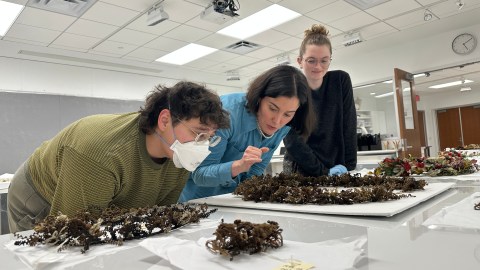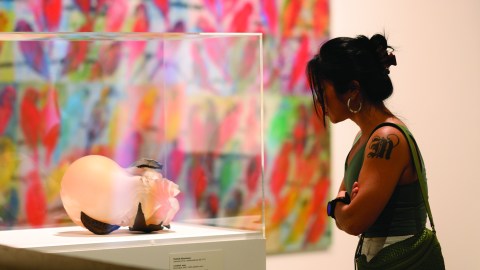This article originally appeared in the May/June 2010 issue of Museum magazine, a benefit of AAM membership.
Q:
I’ve been reading AAM’s 2009 Museum Financial Information. Great data—thanks! But I’m not so sure about the advice you give in the preface, encouraging museums to continue to diversify their income. Won’t that strategy just lead the field further down a slippery slope of commercialism? It’s getting harder and harder to tell whether museums are nonprofit or for-profit organizations by the way they operate today. Just about every problem now facing museums is due to their failure to understand and adhere to their nonprofit status. When we try to be entrepreneurial and business-oriented, we end up compromising our principles and disappointing the expectations of the community and elected officials. Seems to me that to truly act in the public interest, we need to rely on public funding.
A:
We certainly share your belief that a museum’s financial model influences its behavior. He who wields the purse strings often controls the agenda. But the way this plays out in a museum is sometimes counterintuitive. Public and philanthropic funding often come with strings attached, and earned income frequently makes museums accountable to the (paying) public for their behavior.
First, let’s imagine a rosy future in which the U.S. emulates its Western European allies and develops a central ministry of culture that funds all major American institutions. (We’ll set aside for the moment the question of where that leaves all the myriad quirky institutions that arose spontaneously under our current, free-wheeling and self-organized system.) Our international colleagues can share numerous examples of how government funding constrains behavior and can be at odds with core museum values (free speech, for example, and curatorial autonomy).
We don’t even need to look abroad to see this influence in action: Look at America’s closest approximation to the model of centralized government support of arts and culture—the Smithsonian Institution. That august establishment repeatedly has had exhibits quashed or compromised by controversy. For example, the National Museum of Natural History’s exhibit of Subhankar Banerjee’s photographs of the Arctic National Wildlife Refuge was relegated to a back hall due to pressure from senators who feared alienating the oil industry. And the Enola Gay exhibit at the National Air and Space Museum was stripped of curatorial commentary to avoid antagonizing World War II veterans.
Besides, we hear over and over from museums (and other nonprofit organizations) that the key to continued relevance and sustainability is an organization’s ability to be nimble and innovative. While many excellent museums are funded and run by state or federal agencies, such management does not typically foster speed and flexibility.
You also ask how commercial behavior affects public opinion of and willingness to fund museums. But what does the public expect of a nonprofit institution, and why is our nonprofit (or at least our tax-free) status under increasing threat? It’s not clear that museums’ commercial activity overwhelmingly affects our relationship with either the general public or local and state governments.
In fact, AAM program staff are continually discouraged to find that the public has little or no idea what “nonprofit” means. It is usually defined as “the organization shouldn’t make money.” (Even some museum professionals think this, leading us to repeat the mantra, “Nonprofit is a tax status, not a business strategy.”) Nor do they necessarily care whether an institution is nonprofit. People are perfectly willing to volunteer for, donate objects to and purchase memberships from for-profit museums like the International Spy Museum* in Washington, D.C., and the Museum of Sex in New York. Many have misconceptions of nonprofit museums (like “they never get rid of collections”) and little grasp of our actual responsibilities. *Note: the International Spy Museum became a nonprofit in 2016. To learn more about that transition, read this 2019 interview with the museum’s President and COO, Tamara Christian. on the CFM blog.
The threat to government support of nonprofit museums (either directly in the form of grants and subsidies or indirectly through tax-exempt status) does not usually reflect disillusionment due to misconduct or commercial behavior. The major problem is that state, local and even federal governments are mostly broke. Forced to triage their available funds, they are often placing basic human services and infrastructure before cultural amenities. Frankly, we have a hard time arguing with that. When pressed to find new sources of funds, local governments may re-examine property tax exemptions or take similar actions.
In addition, it is getting harder and harder to identify what is unique about the goods and services provided by museums—not just because they increasingly rely on commercial-style elements (food service, shops, event rentals), but because so many businesses are finding they can make money providing traditional museum functions. The number of commercial exhibit touring companies is growing, along with for-profit museums. Philanthropists like Eli Broad, who are willing to make objects available to museums but not turn over title, are adopting functions like collecting and preserving fine art. If wealthy individuals don’t mind bearing the expense of collections preservation while remaining committed to public access, why not let them take this on?
Museums’ willingness to diversify income and earn money is not necessarily a bad thing. Museums that, for whatever reason (a large endowment, support from a parent institution), do not feel this pressure are sometimes disconnected and remote from the needs of their community, content to serve a diminishing number of highly educated, predominantly well-off Caucasians. Museums may have initially provided shops and cafes because they needed the money, but those amenities also make them more attractive to families and to a younger audience that wants a place to hang out and interact with friends. Museums might rent their facility for weddings and graduations for the fee revenue, but these functions also embed them in the hearts and memories of people celebrating these milestones. Sometimes a little capitalism is a good thing, even for nonprofits.
Elizabeth E. Merritt is founding director, Center for the Future of Museums.






